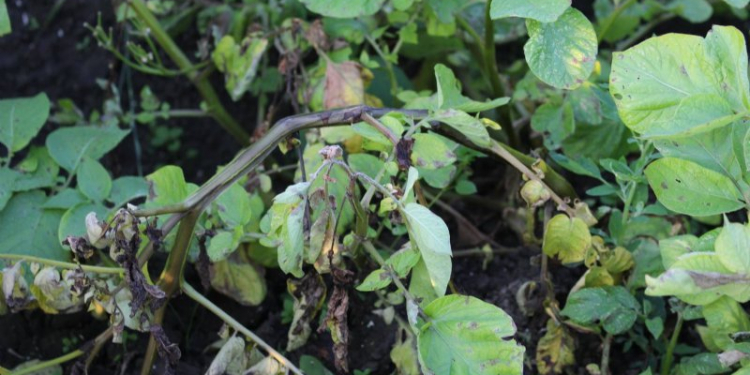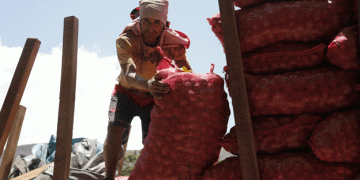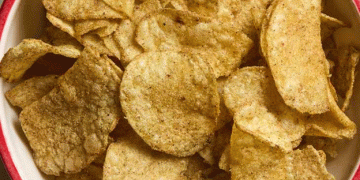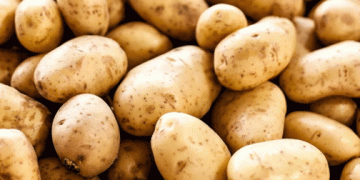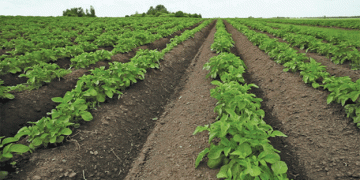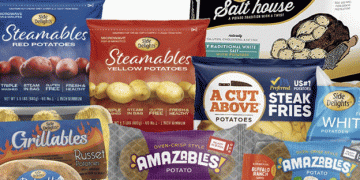Not all robust potato varieties will survive this year when it comes to phytophthora resistance. That is a disappointment, thinks advisor Jacob Eising. However, he is convinced that that will soon change. “The number of varieties with multiple resistance is increasing rapidly. Breeding companies are fully engaged in this.”
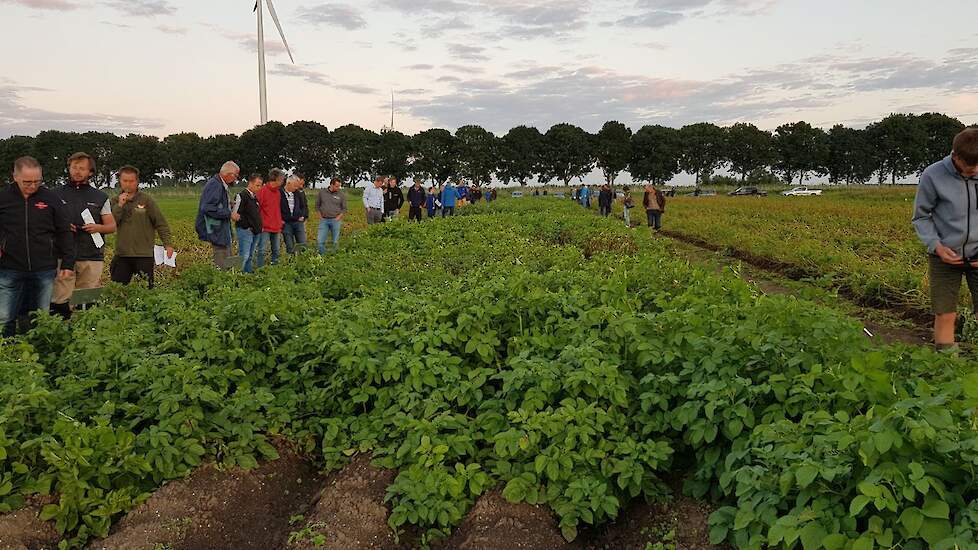
Image: Jacob Eising
Phytophthora pressure is high and this is also noticeable in the test field with robust potato varieties at the organic company Erf in Zeewolde, where Eising spoke to growers and representatives from trade and breeding companies last night. Of the 36 robust varieties here, originating from eleven trading houses, a large part is affected to a greater or lesser extent by the fungal disease. Tuber resistance also turned out not to be equally good in all varieties. That is a disappointment, says Eising.
According to him, the high pressure is mainly due to the many spores that are present in the area. Mainly from storage plants and waste heaps. As a result, the susceptible untreated varieties were already affected early, on which they had to be burned. This largely concerns varieties with an early tuber setting, which means that harvesting is still possible. “They get at least 30 to 40 tons, but that’s not a full harvest.”
Also read: ‘Being(more) economical on phytophthora resistances in robust potato varieties’
He does have hope for the future. The majority of the 36 robust varieties on the trial field have built in one or more resistances. And that variety supply will increase rapidly. “Growers are fully engaged in this.” In the coming years, the robust commercial varieties will be further crossed, strengthening and supplementing both the resistance genes and the commercial properties (such as taste and baking quality).
The demand for robust varieties is growing: Not only the (Dutch) consumer, but also conventional growers are discovering the added value of these varieties: these varieties require less (often) spraying against phytophthora. Robust varieties are already being cultivated on almost 700 hectares this year and that share is increasing by tens of percentages every year, says Eising. “It’s a chain story. If trading houses like it, they will sell these varieties worldwide. Then the percentage of robust seed potatoes will increase enormously.”
Growing susceptible varieties is actually not that smart, Eising acknowledges, but according to him it is also not easy to turn around. “Variety names have become brands, especially on the table market. You can’t break that one-two-three.”
Phytophthora pressure also high in robust varieties
Confronting and disappointing, that’s what advisor Jacob Eising calls the test field robust potato varieties in Zeewolde. This year it is code red for organic potato growers. The wet and warm conditions lead to serious infestations and a rapid spread of phytophthora. The test field in Zeewolde is not looking as expected, the spore pressure is high here too.
“Yes, I’m disappointed,” Eising says. ‘A number of varieties that are resistant on paper are now failing. It is true that rutting starts much later than in susceptible varieties. We also have to be realistic, because this year the pressure is very high. We’re not there yet, but we’re on the right track.’
This season, the need for robust varieties is clearly evident. ‘A considerable percentage of the leaves have already died’, says Eising when he inspects a less resistant variety. ‘We see old and new damage to the leaf. The new infestation will spread over the next hours and days until you have a complete dead leaf.’ Fortunately, there are also varieties that do meet expectations, because there is a green crop just down the road. Eising: ‘Despite the pressure from the environment, this plant is still completely healthy.’
